The Gift of South Dakota
Subscriptions to South Dakota Magazine make great gifts!
Subscribe today — 1 year (6 issues) is just $29!
Ten ‘Must See’ South Dakota Paintings
Color, imagery, and composition are important in art, but South Dakota artist Harvey Dunn believed that paintings should make people think. “In making a picture, you should excite interest, not educate,” he once said.
Some of America’s great art hangs in public buildings and museums in South Dakota. Here are 10 that every South Dakotan should see. Some are immensely popular images that hang as prints in thousands of living rooms. Others are lesser known. All were painted by top artists, though some are now nearly forgotten. One of our Top Ten fills an entire gallery; another is the size of a magazine page.
We chose the Top Ten in part by crass standards like popularity and commercial value, but we gave special emphasis to Harvey Dunn’s criteria: they excite interest. Visit our museums in your travels and judge these treasures for yourself.
Cyclorama, by Bernard P. Thomas
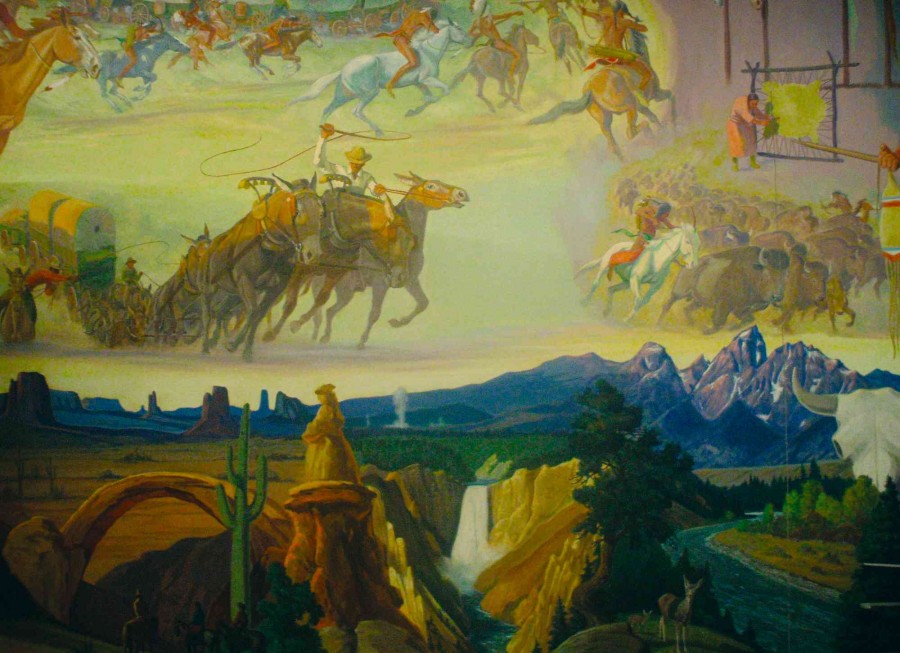 |
| The Dahl Arts Center, Rapid City |
Rapid City's greatest tragedy gave rise to its most impressive work of art. After the devastating Rapid City flood of 1972, prominent banker Art Dahl wanted to re-energize his community. He promised to pay for a new art center on the site of a condemned city auditorium, but only if it included a mural by Bernard Thomas, one of Dahl’s favorite artists. The subject: American economic history.
Thomas was a Wyoming native who studied art in Los Angeles and Paris. He became famous for his paintings of Western life, and was known for immersing himself in his work. “I slept on the ground alongside the outfit’s top hands,” he once said. “I heard their stories of wilder days, and I’m the one who believes the artist who has lived it is the one who can put the right feel in his work. Nothing gripes me more than a Western illustration done by an Eastern illustrator who doesn’t know straight up about the West.”
He tackled the Cyclorama with similar gusto. Thomas labored 455 days on the mural, which stands 10 feet high and 180 feet around. It became the centerpiece of the Dahl Arts Center when it opened in 1974.
Town residents got to watch Thomas’ masterpiece unfold. “Many people in Rapid City had never seen an artist work,” says Darla Drew Lerdal, former assistant director of The Dahl. “People would bring their children and grandchildren and Thomas would let them watch for hours at a time.” As a result, many Rapid Citians became models and were painted into the Cyclorama. Thomas included Dahl’s grandparents as European immigrants and painted himself as a World War II soldier.
Special lighting and a 10-minute narration add to the experience of seeing one of three cycloramas left in the United States.
Woman With a Shawl, by Frank Ashford
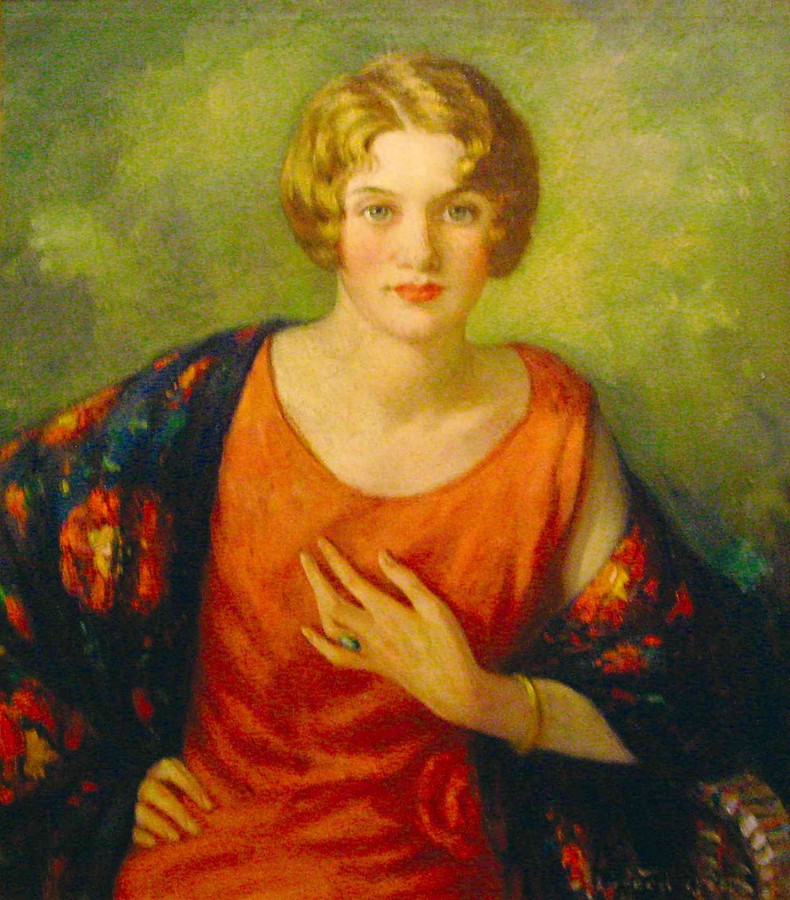 |
| Dacotah Prairie Museum, Aberdeen |
For centuries people have wondered who is the mysterious woman depicted in Leonardo Da Vinci’s Mona Lisa. Aberdonians have their own artistic mystery. Frank Ashford’s 1920s painting of a beautiful, unknown woman still has people guessing her identity.
Ashford was born in Iowa in 1878 but grew up at Stratford, east of Aberdeen. He attended art school in Chicago, Philadelphia and New York before establishing himself in Paris in 1907. When World War I broke out, he returned to New York. During his career he set up studios from coast to coast, but eventually settled in Aberdeen. “He went where he had a big commission, established a studio and just painted prolifically,” says Lora Schaunaman, curator of exhibits at the Dacotah Prairie Museum in Aberdeen. “And then he would move on. He had a gypsy soul.”
In South Dakota Ashford painted governors, Supreme Court justices and a portrait of Calvin and Grace Coolidge at the State Game Lodge in Custer. Aberdeen residents remember Ashford visiting a downtown restaurant and painting whoever struck his fancy. “We think that’s what Woman With a Shawl is,” Schaunaman says. “It’s a young woman who has never been identified. She’s beautiful and kind of mysterious.”
Family members found the painting in the attic of the Ashford home in Stratford in 1994. It was deteriorating, and had a hole punched through the canvas. They gave it to the Dacotah Prairie Museum, and staff members sent it to the Upper Midwest Conservation Association for restoration. Today the mysterious woman with the shawl greets museum visitors just as the Mona Lisa does at the Louvre, 4,400 miles away.
Coyote at Sunrise, by Charles Greener
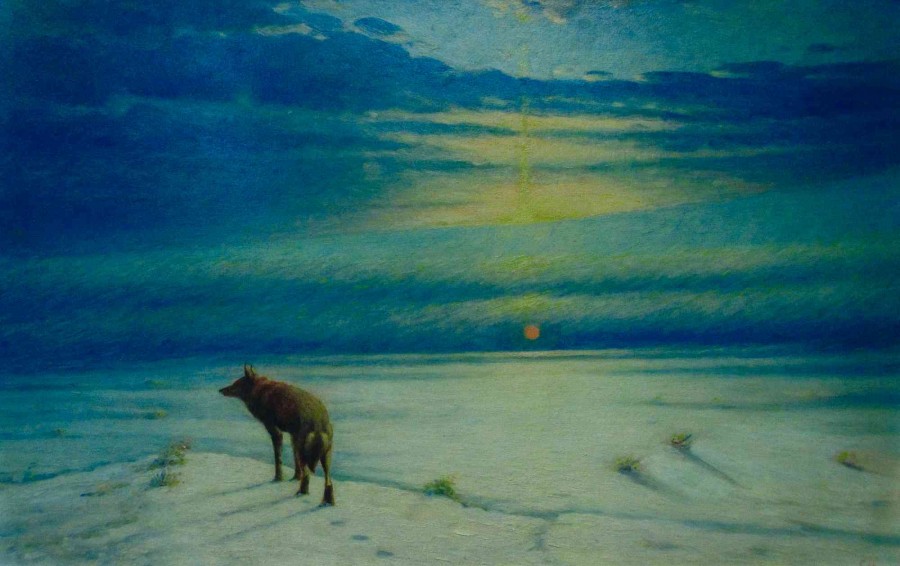 |
| Old Main, University of South Dakota, Vermillion |
Longtime South Dakota Magazine readers might recognize Charles Greener’s Coyote at Sunrise from our November/December 1992 cover. Considered to be one of the Faulkton artist’s best paintings, and our favorite, the original oil hangs in the Asher Room at Old Main on the University of South Dakota campus in Vermillion.
Greener was born in Wisconsin in 1870, but later moved to Faulkton. He studied art in Massachusetts, Ohio, Illinois and North Dakota and represented South Dakota at the World’s Fair in Chicago in 1893. He lived and painted in Faulkton until his death in 1935.
He did portraits (his pictures of Govs. Frank Byrne and Charles Herreid hang in the state capitol) and murals in the Faulk County courthouse, but later focused on Dakota landscapes. He painted whenever the urge struck. Once, while painting woodwork at a local attorney’s home, he painted a landscape on the bathroom door. He planned to wipe it away, but the family urged him to leave it. Visitors at the old Turner home in Faulkton can still see it.
Hunting dogs appeared in many of his paintings, and hills between Faulkton and Orient were often seen in the background. Greener liked to take walks looking for inspiration. One morning he found the coyote, which he quickly sketched and later painted.
Faulkton resident Irene Cordts is the local Greener historian and at one time owned 50 of his paintings, including Coyote at Sunrise, which she donated to the university. She gave others to museums in Brookings, Sioux Falls, Spearfish, Deadwood, Aberdeen, Chamberlain, Faulkton and Mitchell.
As Greener’s art becomes more visible, people develop a deeper appreciation for his landscapes. As writer Dale Lewis, who owned two Greener paintings, said, “Greener sure has something special in his works. They don’t jump at you or hit you over the head, but kinda creep right into your heart.”
The Prairie is My Garden and Dakota Woman, by Harvey Dunn
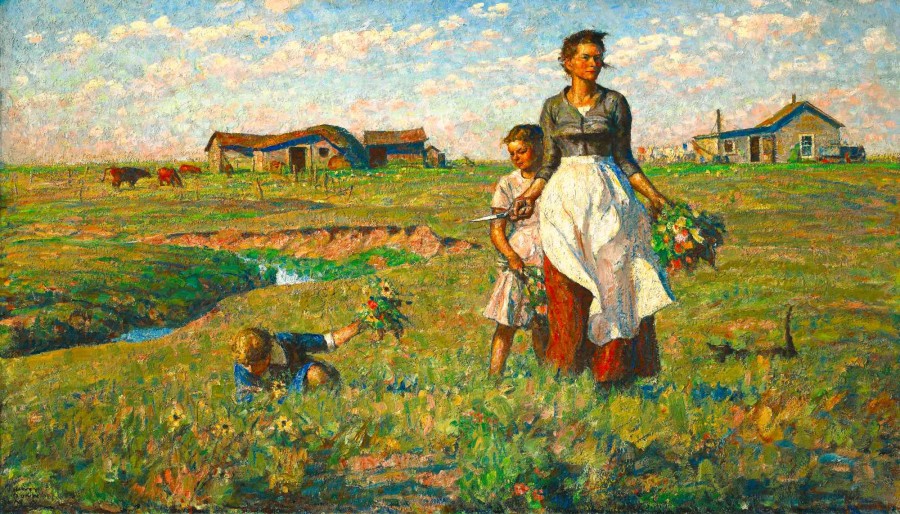 |
| South Dakota Art Museum, Brookings |
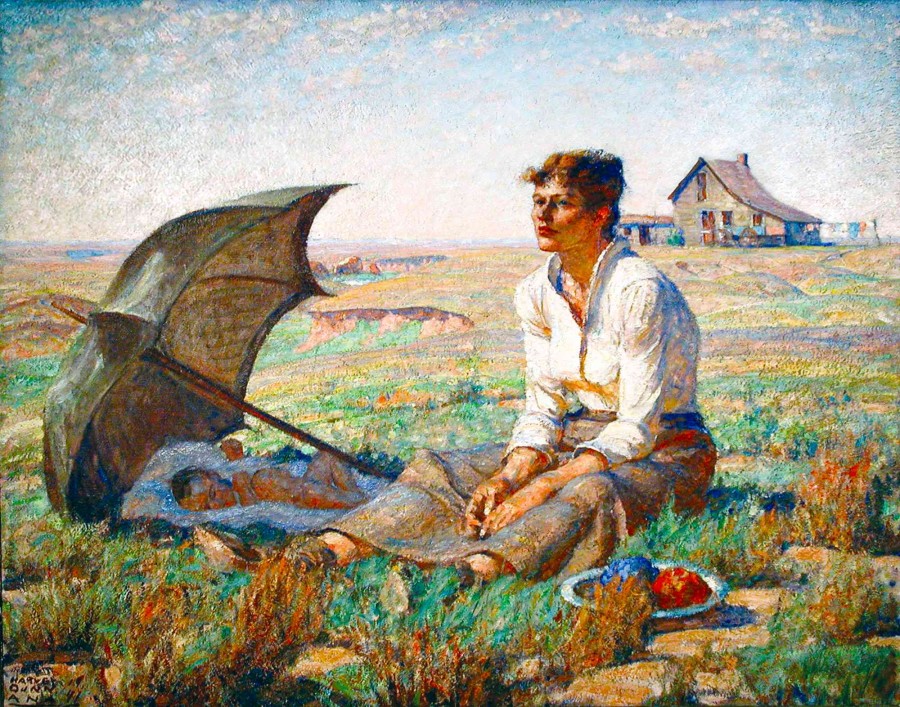 |
| Dakota Discovery Museum, Mitchell |
Visitors think it's their aunt or grandmother who is gathering wildflowers in The Prairie is My Garden, but no one knows the identities of the people in Harvey Dunn’s masterpiece.
“We have lots of claims from people who know who it is,” says Lynn Verschoor, director of the South Dakota Art Museum in Brookings, where The Prairie is My Garden hangs. “But he [Dunn] was an illustrator. He drew people all the time, with just generic faces.”
In fact, very little is known about Dunn’s most recognized Dakota landscape. Records are complete enough to show that Edgar Soreng, a member of South Dakota State College’s class of 1908 and a friend of Dunn’s, donated the work sometime between 1950 and 1970. The scene is likely a combination of Dunn’s memories growing up at Manchester in Kingsbury County and later summertime visits home, when he spent countless hours behind the wheel of his car sketching prairie vistas.
People also claim to recognize the mother and infant in Dakota Woman, but Dunn likely crafted it in the same way. The painting was on and off his easel for years before he finally finished it in 1941. Not long after, Leland Case, founder of the Middle Border Museum in Mitchell, visited Dunn at his studio in Tenafly, N.J. Knowing Case was collecting items for the museum, Dunn told him to pick one of more than 40 prairie paintings to bring to South Dakota. Case wrote that he was “electrified” by the offer and chose Dakota Woman. It was unveiled in April 1942 during “Harvey Dunn Day” on the Dakota Wesleyan University campus.
Dunn studied art in Chicago and became a successful illustrator in Delaware. He went overseas as an artist during World War I, and then resumed his illustrating career in New Jersey after the war. Though Dunn spent most of his life away from South Dakota, his home state inspired his most well known works, and we can thank Aubrey Sherwood for bringing many of them to Brookings.
After giving Dakota Woman to Case and the Middle Border Museum, Dunn promised to donate 40 more paintings if a proper facility could be built. When he arrived in Mitchell in the late 1940s, with a trunk full of paintings, he was disappointed to find no building.
In 1950, Sherwood, publisher of The De Smet News, went to Dunn’s New Jersey studio and saw the prairie paintings. Dunn agreed to exhibit them in De Smet that summer. South Dakota State College President Fred Leinbach, impressed by Dunn’s work, offered the school’s student union to house Dunn’s paintings. The artist donated 42 works.
Since then the university’s collection has grown to include 109 Dunns, but The Prairie is My Garden is by far the most popular. People drive thousands of miles to see it, but like all paintings it needs down time for conservation. To avoid disappointment, it’s best to call ahead.
People are equally eager to see Dakota Woman. Executive director Lori Holmberg says visitors are fascinated by Dunn’s painting. “They’re amazed by the depth and texture of the work,” she says. “Dunn’s work at that period tended to be almost impressionistic. It’s hard to grasp looking at prints, but people are surprised at how texturally rich the original is.”
Best Friends, by Terry Redlin
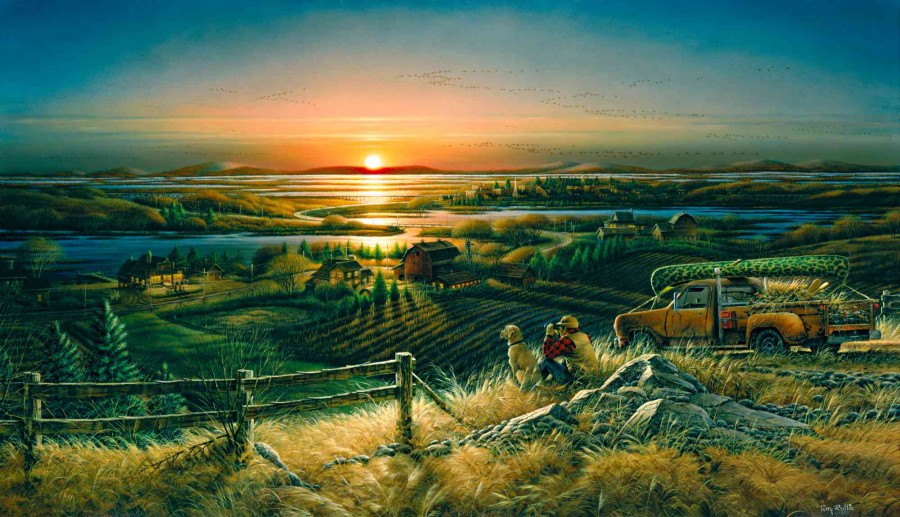 |
| Redlin Art Center, Watertown |
If you don't have a Terry Redlin print hanging in your house, you probably know someone who does. The wildlife artist from Watertown has become one of America’s most collected painters. His art has received national accolades and 155 of his original oil paintings are housed in a grand art center in his hometown, where over 2 million people have visited since its opening in 1997.
After a motorcycle accident quashed dreams of being a forest ranger, Redlin turned to art. He was a hunter and fisherman, so he painted what he knew. That’s especially evident in Best Friends, one of Redlin’s most recognizable and popular works. “After a day of hunting he would go to the highest spot he could find,” says Julie Ranum, executive director of the Redlin Art Center in Watertown. “He referred to it as ‘glassing’ the countryside to see where the birds were. Then he would know where to go the next day. It was part of his routine.”
The hunter in Best Friends is modeled after Redlin’s son, Charles. (Anytime a man wearing a red and black plaid jacket shows up in a Redlin painting, it’s Charles). The artist is fond of Labradors and retrievers, but has never owned one because of allergies, so the dogs often appear in his paintings, too.
Redlin painted Best Friends in 1989, while living in Minnesota. The original limited edition sold out quickly, so Redlin released an encore edition in 1995. Since then it has been one of the Redlin Art Center’s top sellers. “There’s a serenity about it, a peacefulness,” Ranum says. “It’s a classic Redlin. It has that expanse that Terry is able to capture.”
Origin of the Sioux, by Oscar Howe
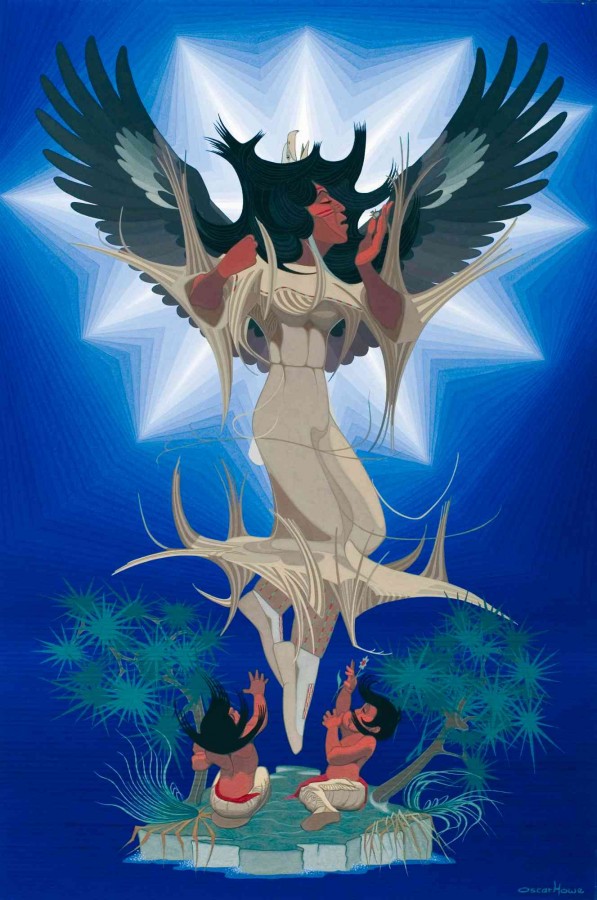 |
| Old Main, University of South Dakota, Vermillion |
Origin of the Sioux is Oscar Howe’s most well known painting. It tells the legend of the first Dakota Indians. When the earth was flooded, an eagle carried an Indian maiden to a lofty peak. There she gave birth to twins, the beginning of the Sioux nation.
In Oscar Howe: Artist, published in 1974, Howe explained the elements of his painting. The rays of light silhouetting the maiden and eagle are chasing away evil spirits of darkness. The blue represents the sky and, in Sioux tradition, peace. Yellow symbolizes religion, and the symmetry is designed to reflect dignity.
Howe’s role as the primary leader of the American Indian Fine Arts Movement from the 1940s to the 1960s brought him international fame and a reputation as an innovator in Indian art. “Howe’s message to Indian artists was twofold,” says John Day, former director of USD’s art galleries and an expert on Howe. “Be yourself and express your own feelings. Then, be true to your Indian heritage.”
Howe was born on the Crow Creek Reservation and studied at the Santa Fe Indian School and the University of Oklahoma. He was a professor at USD from 1957 to 1980 and served as the university’s artist-in-residence. Today USD owns 60 Howe paintings, the largest collection in the world.
The Altar, by Bobby Penn
Many artists studied under Oscar Howe at the University of South Dakota, but a top protégé was Bobby Penn, who became one of his generation’s leading artists. Penn’s most enduring work, The Altar, hangs at the Akta Lakota Museum in Chamberlain.
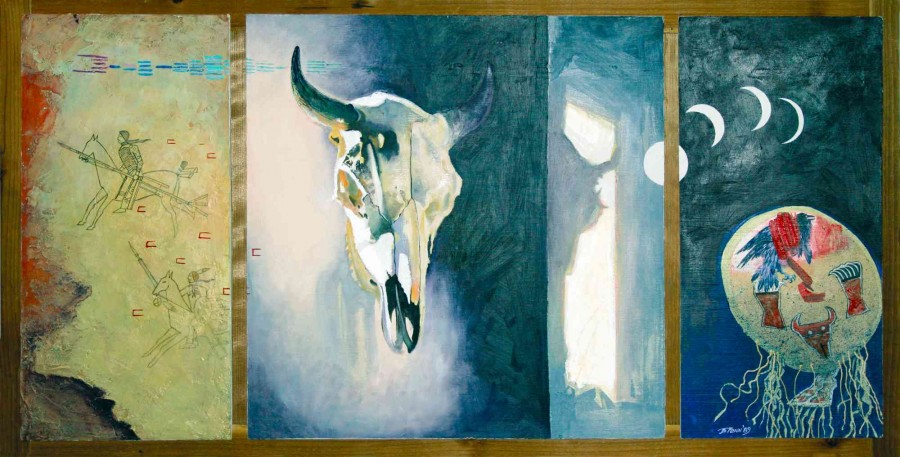 |
| Akta Lakota Museum, Chamberlain |
The Altar is oil on masonite, completed in 1989, and depicts many of Penn’s recurring themes: the buffalo skull, the shield with a wrapped crow and the moon. Scholar John Day calls the painting “an iconic statement that is one of the most well-developed of Bobby Penn’s pieces. The reason this is so good is it marries his traditional, his spiritual and his personal emblems together. It’s a very personal painting that deals with his sense of Indian spirituality.”
Penn’s mother was a member of the Rosebud Sioux Tribe, and he received his early education on Nebraska’s Winnebago Reservation and at St. Francis Mission on the Rosebud Reservation. He attended Howe’s summer art institute at USD in the 1960s and later enrolled in the university’s art program. He studied intensely with Howe during his four years there and earned a degree in fine arts. He later ran the summer institute and was a full-time professional artist in Vermillion from 1988 until his death in 1999.
Howe’s influence can occasionally be seen in Penn’s work, but his paintings are entirely his own. His mentor was successful in passing along his ideas of self-expression, individuality and truth to Indian heritage. “Their quality was so high they commanded national and international attention,” Day says of Penn and Howe. “Penn was clearly one of the best artists of his generation.”
A President’s Wife (study), by Norman Rockwell
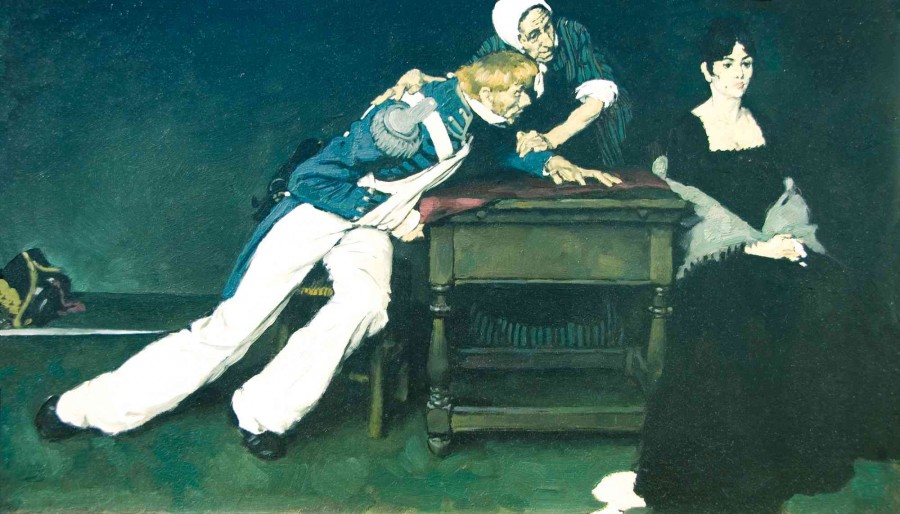 |
| Center for Western Studies, Sioux Falls |
Norman Rockwell was meticulous when he painted A President’s Wife in 1939. First came sketches of his subjects and photographs from all angles. He used those images to create a study, a small painting measuring 13 1/2 by 24 inches. From that Rockwell’s completed one of his largest paintings – 3 by 5 feet.
Experts think that enormous painting was destroyed when Rockwell’s studio burned in 1943. But the valuable study is at the Center for Western Studies in Sioux Falls. It shows President James Madison’s wife, Dolley, waiting for news about her husband during the War of 1812. It illustrated a fictional story written by Howard Fast in the August 1939 issue of Ladies’ Home Journal.
Rockwell gave the study to a friend in 1945, two years after the studio fire. He painted prolifically over the next 30 years and eventually forgot about A President’s Wife. When the study’s owner wrote to Rockwell for information in 1972, the artist replied, “I just can’t recall any of the details, who posed for it or what it was for.”
A Wisconsin man, Donald Evans, bought it in 1977 and donated it to the Center for Western Studies in 1995. Rockwell studies are rare, and recent developments in the art world have assigned it greater importance. “Within the last 10 years, Rockwell’s stock as a serious artist has risen considerably,” says Tim Hoheisel, director of outreach and communication at the Center for Western Studies. “Consequently the significance of A President’s Wife has also drastically increased. It’s a treasure in the Center’s collection.”
Here I Am…Speechless, by Henry Payer, Jr.
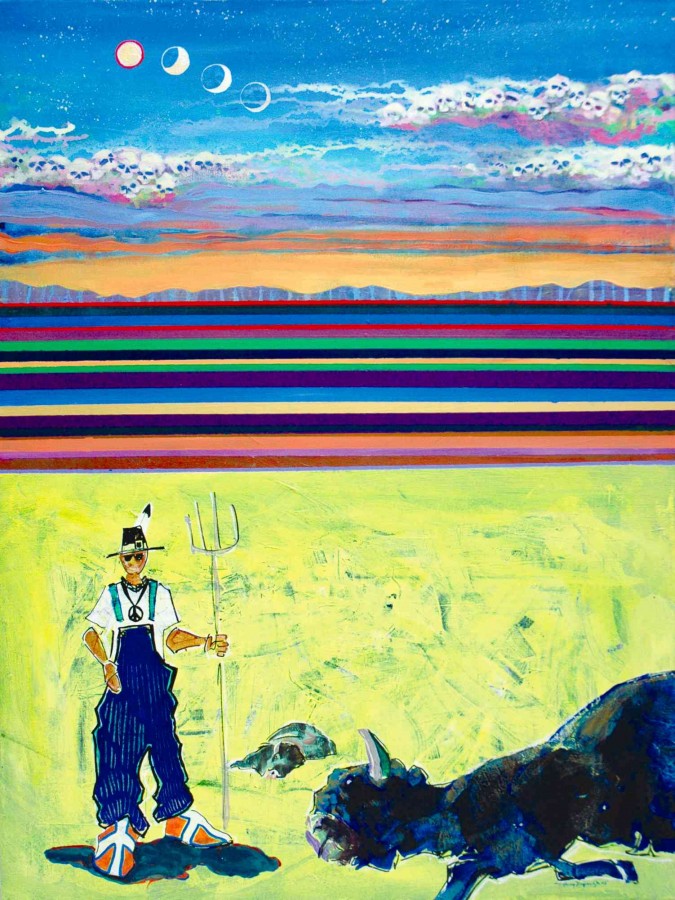 |
| The Heritage Center, Red Cloud Indian School, Pine Ridge |
The annual Red Cloud Indian Art Show gives young Native artists a chance to gain exposure in the art world. In 2008, judges were so impressed with Henry Payer, Jr.’s Here I Am…Speechless they awarded it second place in the painting division, the Brother Simon S.J. Publicity Award (meaning it was used on promotional materials for the next show) and then bought it for the Heritage Center’s permanent collection.
“It shows what a young Native artist in today’s world sees,” says Peter Strong, director of The Heritage Center at the Red Cloud Indian School in Pine Ridge. “It breaks out of that traditional perception of native art as being very primitive, and that it has to have a man on a horse with his hair flowing in the breeze. There’s a much more contemporary feel to it.”
Payer, Jr., 25, is a member of the Winnebago Tribe of Nebraska and a graduate of the Institute of American Indian Arts in Santa Fe, N.M.
Strong says the painting’s skulls, bold colors and graphic design give it a contemporary feel. Payer also excels at mixed imagery. “By blending images that reflect traditional symbolism, ecological issues, and contemporary American art, Henry is telling a very personal and honest story about what Native people are today,” Strong says.
Editor’s Note: This story is revised from the January/February 2009 issue of South Dakota Magazine. To order a copy, or to subscribe, call 800-456-5117.



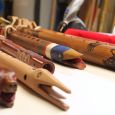

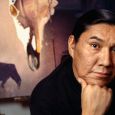
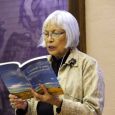
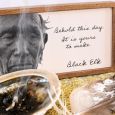


Comments
it describes most natives on our reservations alone but still stand tall in the morning
Herb Adams
Thank you
I'd like to know more about Noah Adams and his Art . The 4 previous posts Suzy Horace , Herb Adams , Fred Thiemer and Linda Clausen can contact me .
I recall him painting a picture for my parents using a 4 inch brush in each hand and turning out a lovely painting in just a few minutes. We begged him until he signed it. I have since acquired several more signed paintings and they're rather hard to find.
Noah Adams did NOT die in a bar fight as stated above. He died of a heart attack while making his way from Colorado to Arizona.
Does anyone have any info on this artist? TIA